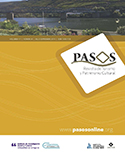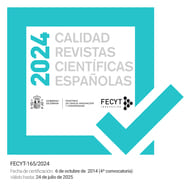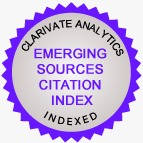The rethinking and enhancement of the natural and cultural heritage of the cultural landscapes: the case of Secovlje and Janubio saltpans
DOI:
https://doi.org/10.25145/j.pasos.2019.17.048Keywords:
Cultural landscapes, Sečovlje saltpans, Janubio saltpans, Culture‑nature relations, Enhancement of the valuesAbstract
Cultural landscapes represent a complex category where the nature-culture dichotomy seem to not be able to unfold the main features and the profound relations that humans have with the environment. Drawing on ethnographic data collected in the saltpans of Secovlje (Slovene Istria) and Janubio (Lanzarote-Canary Islands) this article examines informant`s perceptions about the awareness of the importance and the enhancement of the holistic values of both saltpans, as well as the impacts and benefits of tourism. Comparing these perceptions about both cultural landscapes, I try to suggest that the complex fruitfully relations between humans and nature in these saltpans are at odds with the neoliberal logic of nature which exploit and commoditize its resources depriving them of their respective agency. A sustainability to contrast the harmful activities of the market ought to be understood not as a simply isolation and fencing of nature for the sake of conservation, but as a preservation that need to foster the continuity of the deep interactions between human culture and non-human nature which are the core of the cultural landscapes.
Downloads
Publication Facts
Reviewer profiles N/A
Author statements
- Academic society
- PASOS. Revista de Turismo y Patrimonio Cultural
- Publisher
- Instituto Universitario de Investigación Social y Turismo. Universidad de La Laguna (España) - Instituto Universitario da Maia ISMAI (Portugal)
References
Århem, K. 1990. “Ecosofía makuna”. In La selva humanizada: ecología alternativa en el trópico húmedo colombiano (ed.) F. Correa, 106-26. Instituto Colombiano de Antropología. Bogotá.
Arntzen, S. 2003. Cultural Landscape and Approaches to Nature – Ecophilosophical Perspectives. Norway: Telemark University Collage.
Bacon, P. R. 1987. Use of wetlands for tourism in the insular Caribbean. Annals of Tourism Research, 14(1): 104–117.
de Lillo, A. 2010. Il mondo della ricerca qualitativa. UTET Università.
Descola, P. 1992. “Societies of nature and the nature of society”. In Conceptualizing societies (ed.) A. Kuper, 107-26. London: Routledge.
Descola, P. 1994. In the Society of Nature: A native ecology in Amazonia. Cambridge: Cambridge University Press.
Descola, P. 1996. “Constructing natures: Symbolic ecology and social practice”. In Nature and society: Anthropological perspectives (eds.) Descola, Philippe & Gísli Pálsson, 82-102. London/New York: Routledge.
Descola, P. and Pálsson, G. 1996. “Introduction”. In Nature and society: Anthropological perspectives (eds.) Descola, Philippe & Gísli Pálsson, 1-21. London/New York: Routledge.
Elkins, T.H. 1989. “Human and Regional Geography in the German-speaking lands in the first forty years of the Twentieth Century”. In Reflections on Richard Hartshorne’s The nature of geography (eds.) Entriken, J. Nicholas & Brunn, Stanley D, 27. Occasional publications of the Association of the American Geographers, Washington DC.
Ellen, R. 1996. “Introduction”. In Redefining nature. Ecology, culture and domestication (eds.) R. Ellen and K. Fukui, 1-36. Oxford: Berg.
Evans-Pritchard, E. E. 1940. The Nuer. Oxford: Oxford University Press.
Evans-Pritchard, E. E. 1951. Social Anthropology. New York: Free Press.
Gell, A. 1998. Art and Agency: an anthropological theory. Oxford: Clarendon.
Gibson, J. 1979. The Ecological Approach to Visual Perception. Boston: Houghton Mifflin.
Godelier, M. 1984. The Mental and the Material: Thought, Economy and Society (M. Thom, trans.). London: Verso.
Heidegger, M. 1962. Being and Time, trans. MacQuarrie and Robinson, New york: Harper and Row.
Heidegger, M. 1971. Poetry, language, thought. New York, NY: Harper.
Howell, S. 1984. Society and Cosmos: Chewong of Peninsular Malaysia, Chicago and London: University of Chicago Press.
Ingold, T. 1986. The appropriation of nature: Essays in human ecology and social relations. Manchester: Manchester University Press.
Ingold, T. 1992. “Culture and the Perception of the Environment”, In Bush Base-Forest Farm: Culture, Environment and Development (eds.) E. Croll and D. Parkins, London: Routledge.
Ingold, T. 1993. The Temporality of the Landscape. World Archaeology, 25(2): pp. 24-174.
Ingold, T. 1996. “The optimal forager and economic man”. In Nature and society: Anthropological perspectives (eds.) Descola, Philippe & Gísli Pálsson, 25-44. London/New York: Routledge.
Ingold, T. 2000. The perception of the Environment. Essays in livelihood, dwelling and skill. London: Routledge.
James, P.E. & Martin, G. 1981. All Possible Worlds: A History of Geographical Ideas. New York: John Wiley & Sons.
Jones, M. 2003. “The concept of cultural landscape: discourse and narratives”. In Landscape Interfaces: Cultural Heritage in Changing Landscapes (eds.) Palang, Hannes and Fry, Gary,21 -51. Dordrecht: Kluwer.
Kareiva P, Watts S, McDonald R, Boucher T. 2007. Domesticated nature: shaping landscapes and ecosystems for human welfare. Science 316(5833):1866– 1869.
Karim, W.-J. 1981. Ma’ Batisek concepts of living things, London: Athlone.
KPSS. 2011. Krajinski park Secoveljske soline – Nacrt upravljanja 2011 – 2021.
Kroeber, A. L. and Kluckhohn, C. 1952. Culture: A Critical Review of Concepts and Definitions, Harvard University Peabody Museum of American Archeology and Ethnology Papers 47. Lévi-Strauss, C.
Le Totémisme Aujourd’hui. Paris: PUF.
Luengo, A y Marín, C. 1994. El Jardín de la sal. Ed. Excmo. Cabildo Insular de Lanzarote. Cfr.184-185 y 225.
Marx, K. 1994. Selected writings (eds.) Lawrence H. Simpson. Indianapolis & Cambridge: Hackett Publishing Company. Næss, A.
Ecology, Community and Lifestyle. Cambridge, New York: Cambridge University Press.
Næss, A. 1995a. “The Third World, Wilderness, and Deep Ecology”. In Deep Ecology for the Twenty-First Century. (ed.) George Sessions, 397–408. Boston, London: Shambhala.
Næss, A. 1995b. “Deep Ecology for the Twenty-Second Century”. In Deep Ecology for the Twenty-First Century. (ed.) George Sessions, 463–468. Boston, London: Shambhala.
Plumwood, V. 2006. The concept of a cultural landscape. Ethics and the Environment, 11/2.
Puche Riart, Octavio; Ayarzagüena Sanz, Mariano y Mazadiego Martínez, Luis Felipe. 2009. Patrimonio salinero español. En: „La aportación histórica de la sal: investigación y puesta en valor“. Memorias de la Sociedad Española de Historia de la Arqueología (II). (ed.) Sociedad Española de Historia de la Arqueología (SEHA), 103-120. Toledo. ISBN 978-84-692-4848-5.
Rappaport, R. 1968. Pig for the Ancestors: Ritual in the Ecology of a New Guinea People, New Haven: Yale University Press.
Rappaport, R. 1971. Ritual, Sanctity and Cybernetics. American Anthropologist 73: 73-76.
Rappaport, R. 1979. Ecology, Meaning and Religion, Berkeley: North Atlantic Books.
Reichel-Dolmatoff, G. 1971. Amazonian Cosmos: The Sexual and Religious Symbolism of the Tukano Indians, Chicago: University of Chicago Press.
Ritchie, J. & Lewis, J. 2003. Qualitative research practice. A Guide for Social Science Students and Researchers, London: Sage Publications.
Rosset, C. 1973. L’anti-nature: Eléments pour une Philosophie Tragique, Paris : Presses Universitaires de France.
Sahlins, M. 2008. The Western Illusion of Human Nature : With Reflections on the Long History of Hierarchy, Equality and the Sublimation of Anarchy in the West, and Comparative Notes on Other Conceptions of the Human Condition, Chicago: Prickly Paradigm Press.
Sauer, C. 1925. The Morphology of Landscape. University of California Publications in Geography, 22: 19-53.
Searle, J. 1995. The Construction of Social Reality, London: Allen Lane. Seeger, A.
Nature and Society in Central Brazil, Cambridge: Harvard University Press.
Škornik, I., Sovinc, A., Gogala, A. 2004. Se-ovlje Salina Nature Park, CD-ROM, Soline Co. Ltd.
Sovinc, A. 2008. Secovlje Salina Nature Park, Slovenia – new business model for preservation of wetlands at risk. Global NEST Journal, Vol 11, No 1, pp 19-23, 2009.
Sovinc, A. 2011. Se-ovlje Salina Nature Park, Slovenia: Latest development and important cultural activities. In: Papayannis, T., Pritchard, D.: Culture and Wetlands in the Mediterranean: an Evolving Story. Athens, Med-INA, 227–234.
Sovinc, A. 2012. Assessment of the use values of the Se-ovlje Salina Nature Park (Slovenia). Annales: Series Historia Naturalis 22.2 (2012): 189-196.
Strathern, M. 1980. “No nature, no culture: the Hagen case”. In Nature, culture and gender (eds.) Mac Cormack and M. Strathern, 174-222. Cambridge: Cambridge University Press.
Tilley, Christopher. 1994. A Phenomenology of Landscape. Places, Paths and Monuments. Oxford: Berg Publishers. UNESCO (United Nations Educational S, and Cultural Organization) (1996) Operational guidelines for the implementation of the world heritage convention. UNESCO, Paris. http://whc.unesco.org/archive/opguide05-annex3-en.pdf
Viveiros de Castro, E. 1998. “Cosmological deixis and Amerindian perspectivism.” Journal of the Royal Anthropological Institute 4 (3): 469–88.
Vodeb, K. 2014. Trajnostni razvoj turisticnih destinacij alpsko – jadranskega prostora. University of Primorska.
Wang, Chun-Hsi and Fu, Chao-Ching. 2011. The Sustainable Development of the Cultural Landscape of Jianan Irrigation System in Taiwan. Presented at the ICOMOS 17th General Assembly and Scientific Symposium, Paris, France.
Weber, M. 2002 “Economy and Society: An Outline of Interpretive Sociology”. In Readings in Economic Sociology (ed). N. W. Biggart, Blackwell Publishers Ltd, Oxford, UK.
World Heritage Centre. 2008. Operational Guidelines for the Implementation of the World Heritage Convention. Paris: UNES- CO World Heritage Centre.
Downloads
Published
How to Cite
Issue
Section
License
I confirm that the work is original (of my/our authorship), and that it will not be submitted to other journals or publications until the final resolution of the review process in PASOS, RTPC.
I authorize the publication of my work by PASOS, PSTN of free and open access in any of the formats that I deem appropriate, for an indefinite period of time and as a non-remunerated collaboration.
Likewise, the author(s) understands that the published work may be linked or deposited on any server or included in other publications (republication), provided that the new place and/or new edition references the original publication and acknowledges the authorship and copyright ownership of PASOS RTPC publications.
Authors understand that a plagiarism-self-plagiarism check will be performed, and the article may be removed at any time from the editorial flow.










